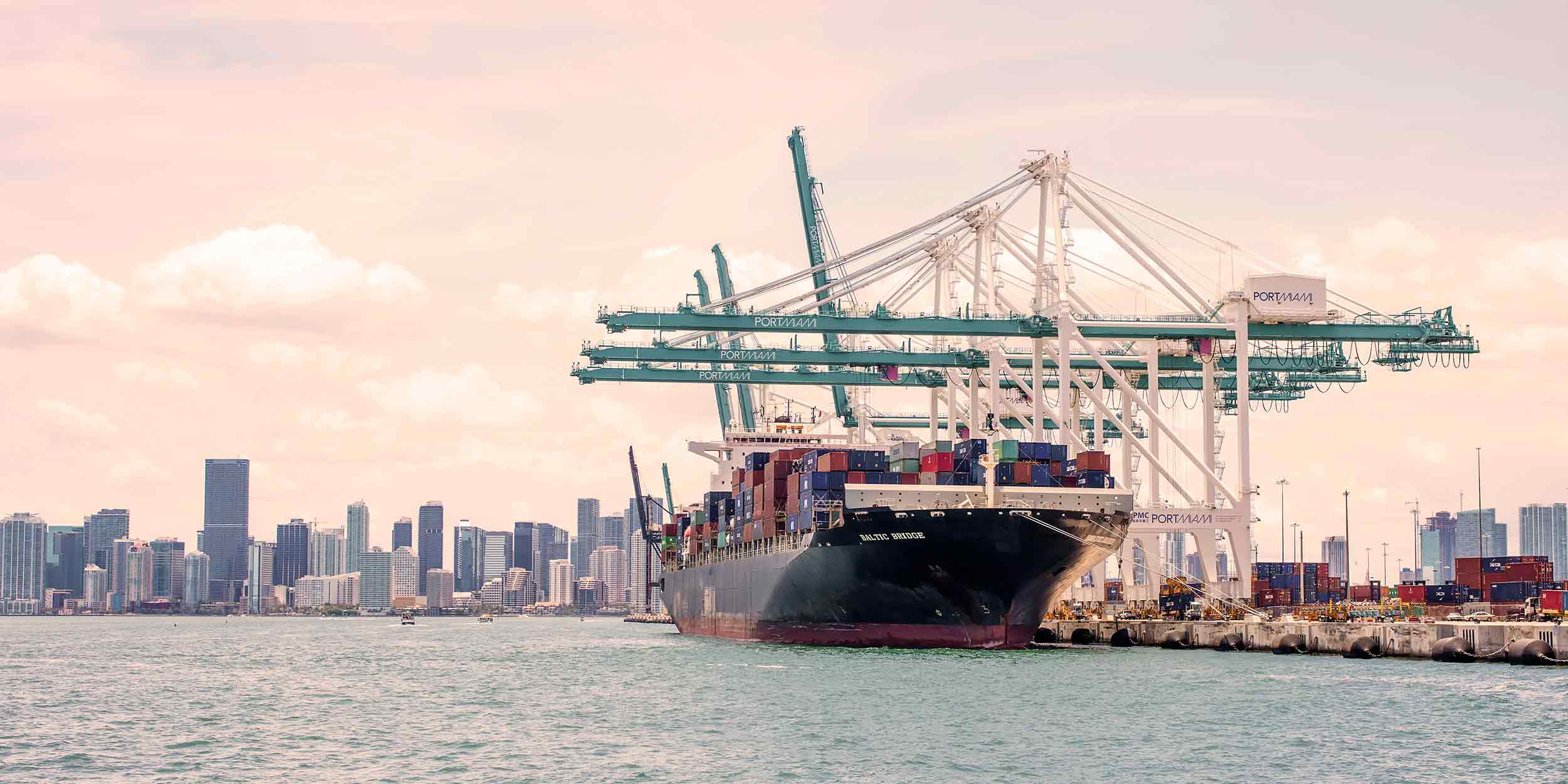Trade tariffs: What are the risks for supply chains?
TrendsArticleApril 16, 20256 min read
Risk managers have a critical role to play in helping their organizations anticipate and mitigate the impact of US trade policy on marine cargo and supply chains, according to Zurich’s Howard Kingston, Global Head of Marine, Zurich Commercial Insurance and Camila Chandra, Head of Marine EMEA, Zurich Commercial Insurance.
The radical overhaul of US trade policy announced on April 3, which triggered high volatility in global stock markets, heralds a major departure from the free and open global trade environment that has marked much of the post-war period.
The imposition of US tariffs – which could spark a full-blown trade war – is expected to upend the global trade equilibrium and reshape supply chains. With some $7 trillion in trade, the US is the world biggest importer of goods, and the second largest exporter. China is the biggest exporter of goods to the US, although when taken as a whole, the EU was larger in 2022, according to the Office of the US Trade Representative.
For companies involved in international trade, or reliant on global supply chains, the changing global trade environment will have wide ranging implications. For some, there will be opportunities, but for many corporates, the emerging volatile trade climate will challenge supply chains and business models, with increased potential for supply chain disruption, higher costs and more complex compliance.
Uncertainty and delays
Tariffs and other trade measures will increase the potential for delays to supply chains, which are already under pressure from attacks against shipping in the Red Sea, which have caused vessels to reroute around the Cape of Good Hope. Uncertainty over tariffs could see a repeat of post-pandemic supply shortages and delays, caused by surges in demand, port congestion, container shortages and shipping capacity constraints.
US plans to charge fees of $1m or more for Chinese-operated or built cargo vessels calling at US ports will only exacerbate these pressures. Industry and trade bodies have warned the proposals would increase costs and result in shortages of shipping capacity for some goods and on some routes. Changes to border controls, customs procedures and port inspections could also cause delays as authorities seek to confirm origin of products and apply a complex tariff regime.
The effects of US tariffs will also not be limited to US trade, as its trade policy is likely to have wider implications for trade. The ripple effect of US tariffs could see changes in trade relations between other countries and regions as they seek to mitigate the impact of US trade policy, open up new export markets, and protect domestic markets.
New markets, different risks
A changing trade environment is likely to result in big shifts in where companies trade, locate production and/or source suppliers. US trade tariffs are already causing companies to review supply chain strategies and seek new export markets, according to the ICTTM. Manufacturers are accelerating nearshoring and investment in domestic production, diversifying supplier networks and exploring alternative shipping routes, it said.
Trading in new, and potentially unfamiliar markets, comes with risks, including natural catastrophes, political, social and economic risks. Trade disputes and a global economic downturn may compound the rising threat of civil disruption and international conflicts: Armed conflict and geoeconomic confrontation were among the top three risks in this year’s WEF Global Risks Report. The broader economic impact will have wider potential implications for supply chains, such as increased risk of insolvency- according to J.P. Morgan Research, there is a 60% risk of a global recession taking hold this year.
Higher risk of cargo theft and damage
The risk of theft, is of particular concern, especially if economic conditions deteriorate (cargo theft in North America increased 27% in 2024, reaching unprecedented levels, according to CargoNet). Criminals are quick to seize opportunities, while cargo security can take time to adapt to changes in trade routes.
Geographic shifts in trade could also increase the risk of damage to cargo. Resilience of infrastructure, such as ports and roads, can vary greatly by location, as can the quality local logistics partners, warehouses, cargo handlers and security. This is particularly important for high value, large, complex or hazardous cargo that requires skilled cargo handling, specialist equipment or environmental or safety controls.
Risk managers can help their organizations identify heightened risks of theft or damage and reinforce strong supply chain security and loss prevention practices. For example, local conditions may require additional measures when it comes to cargo packing and security. Exporters will want to be confident that goods will arrive on time and undamaged, especially when looking to expand into new markets.
Rising costs and values
Tariffs will have an immediate impact on the value of cargo, as goods entering markets like the US could be subject to substantial taxes. In addition, surges in demand, delays and stockpiling of goods to mitigate the impact of higher tariffs could lead to higher accumulations of cargo exposure in ports and warehouses. At the same time, general inflation could rise in some markets as tariffs and supply chain disruption drive up the costs of some goods and materials.
Higher values will need to be reflected in insurance limits. Policy limits, which often cap cargo coverage for a location or shipment, may prove insufficient in light of tariffs and potential increases in cargo accumulation. Under-insurance is likely to be of greatest risk for sectors most exposed to tariffs, such as automotive, electronics, pharmaceuticals and consumer goods.
Staying informed and close to the business
On a positive note, many organizations have strengthened supply chain risk management since the pandemic. However, the challenge posed by shifting global trade will require additional vigilance, resilience and transparency.
Risk managers have a critical role to play in helping their organizations navigate the changing trade and supply chain risk landscape. Staying informed and aware of changes will be vital in a dynamic trade environment. Trade bodies are a useful source of information into the changing trade environment, while insurers are also able to provide insights into risk and insurance implications.
Collaboration will also be key. Risk managers will need to work hand-in-hand with internal partners, including logistics, procurement and supply chain management to share knowledge and experience. Having a seat at the table will enable risk managers to get on the front foot, to identify and mitigate risks early. While regular conversations with insurers can help risk managers stay on top of potential risk and coverage issues.
The need to stay informed and work closely with business and insurance partners has never been greater.
Originally published in Commercial Risk on April 16 2025.


